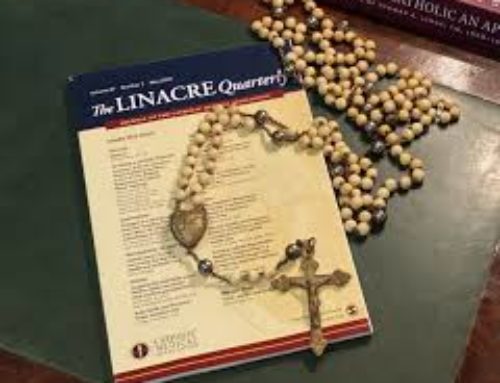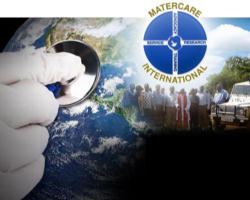Anne Lastman
Theology of the Body has been predominantly seen as the preeminent document on human sexuality of the divine kind expressed in human way. It’s a document on marriage and sexuality and the meaning of these in the life of a human being.
For the Catholic/Christian this work is of inestimable value and a testament to the grace of married love and the fruit of this love, (family and children) which from the beginning have been seen as the “pearl of great price” and which has been the core of stability for humanity and civilisation.
St. John Paul II’s opus “Theology of the Body” expands on this “pearl of great price” and illuminates for us the great beauty intended by God when He created the human body and the mysteries which He has hidden within the body. He offers insights into the centrality of marriage, intimacy, sexuality and family and their importance in the development of civilised cultures filled with life and love.
We have today a culture which is radically leading to the rejection and despising of marriage according to the dictates of God, and hijacking this Sacrament into a caricature of its original design where a man and a woman come together to form an indissoluble union.
The new society calls for all types of “union configurations” and are appended to the “human rights” idea and demanded to be formalised in legislature. Where men and women are progressively rejecting the Holy sacrament, while disordered unions are being legalized.
Into this milieu of confusion St. John Paul II’s meditations on body, soul, love, sexuality, family, conception, have been a great gift and especially a call not to attempt to corrupt the original design wherein is imprinted a conjugal desire. A desire which expresses itself in the call to the other to meet and unite in order to fulfil or complete that conjugal component of marriage, that divine secret.
This conjugal secret of the human being inherent in its design is the need for another to complete it (so as not to be alone-Gen:2.20) and permits us to note with certainty the falsity at the very root of demands for recognition of unions which do not have, and cannot have the “conjugal” element written into them. A false and artificial demand for some kind of fusion, perhaps, but not authentically conjugal.
There is an immense diversity within the body of the male and female and as such each must be attendant to the call of the other. The “otherness” of the other is the attraction and love of that “otherness” which is found in the whole person from the visible to the invisible.
The conjugal mystery written within the nature of male and female is a kind of Indian “Love Call” (Song by Jeanette McDonald & Nelson Eddy). Hauntingly beautiful it slowly moves towards the other’s conjugal heart. Indeed, it could also be said that in the conjugal union the “rib” (Gen.2:23) returns to its place of origin (Adam) and together they form whole “man” again and begin their mandate to “be fruitful and multiply and fill the earth.” “Male and female he made them” and in this union they become whole again.
The unity which is formed when the conjugal union is authentic becomes “flesh of my flesh and bone of my bones” (Gen.2:23) the gift of myself and the call of each other gives life, because in that unity they make truthful the whole. Independent, alone, they cannot fecundate because they are alone in that design. The design of the “man” does not fit other male or other creations, “but no helper suitable for the man was found” (Gen 2:18-23) but the one created specially to fit the other. One like himself but different.
Indeed, the one flesh union is the cornerstone of the union of marriage, just as Jesus is the cornerstone of the union between Himself and his bride called “Church” (the one holy bride) giving birth to children for the kingdom. It’s in the seeing of the marital act in the light of God’s intention via the Holy Spirit, that the sacramentality of this physical act of the sacrament is clearly seen.
The language that the body speaks is meant to always be a language of love, truth and faithfulness. Yes, the body speaks and its language is designed to be honest, but it can also be made or even forced (contraception, and all forms of artificial barrenness) to speak a language of deceit. When it speaks of Truth, the sacramentality is seen (open to life) and it is this sacrament which must be protected against all falsehoods. When it speaks a lie, it’s the language of the father of lies (Jn 8:44) and this language speaks untruth leading to contraception, the need for abortion, homosexuality, gender confusion, all forms of barrenness, and the culture of death. No Life. No fruit. No “whole” man.
The truth of love which the body speaks is one of life, wholeness, openness, laughter, joy, peace and unity, with no hindrance or obstruction to the receptivity of these. The body speaks and receives the language of love and the response to this love is fulfilment, fecundity, life. The creation of male and female are mandated to continue the work of creation.
Even when expressing carnal love or the “Eros” type of love, the body is meant to express and speak the language of happiness and this happiness is seen in the Sermon on Mount where Jesus speaks about purity of heart which is an ethic of the redemption of the body, a redemption and a ransoming back of divine intimacy from the lust of sin to the joy of true intimacy.
From the beginning it was not sin which God had intended but a Divine intimacy, the type of Divine intimacy seen in the Transfiguration, the transfigured body of the Christ and the love of the Father heard through the theophany “this is my beloved Son”. But divine intimacy was barred and changed when “lust” was found in the heart of man and woman. Divine intimacy changed when the body of the other began to be used as an object rather than a gift. Divine intimacy changed when purity of heart intended by God became distorted through the sin of origins. Wickedness and distortion and self determination. The purity of heart changed when “Eve” offered “Adam” an opportunity to sin and he did not reject the offer but instead accepted the offer and together they changed their original design into an adulterated one. Blessed are the pure in heart speaks of what God had wanted for the human being who now (after sin) was and has to be clothed in “garment of skin” a portend of sacrifice (Gn3:20) and a change of what was in its origins. Indeed, the garment of skin was created to clothe the spirit and sin of man and to create a visible entity.
Before sin, “in the beginning” garments of skin (Gen 3:21) were not necessary because “Adam” (generic human male and female), could see their relationship with God clearly, they were fully exposed to God who created them and “walked with them” (Gen.3:9) He formed the original prototype in the image of His son Jesus, the perfect template for the new creation who would commune with the creator, in the garden.
This is what garment of skin hides. The garment also covers sin and now hides the spirit. The garment of skin hides temporarily what is awaiting those who love the Lord, “The Glory which shone on the face of Jesus” (Mt 17:1-9). The garment also hides the visual presence of God “you cannot see the face of God and Live” (Ex. 33:20) for the time of earthly life. Garments of skin act as a barrier to intimacy with Our Father Creator.
Agape Love
Within this type of “love” is found that when it is “freely given” “wholly given” (I give my body to you, the essence of my body, the essential me, unique and unrepeatable me to form a new “us” and this without selfishness.” It’s always faithful love and always it’s fruitful love.
To protect the agape love of marriage from falsehoods and false love (lust) this is what is needed. Be free with the freedom of the echo of the beginning. Fruitful with the beloved. As an echo of the word “be fruitful and multiply” Faithful to the beloved. As faithful as the creator in the beginning. Wholly given to the beloved without holding back or without obstruction as prior to the “tunic of skins,” when generation became less well understood, hidden and unlike “in the beginning.” This holy ethic redeems sexuality from lust but it also frees the body for spontaneous response to the beloved’s recognition, call, and is the lifelong recognition of that spirit’s companion for the journey, “man.” Another echo of the beginning when God called all the beasts and found none worthy of “Adam” and thus created a “worthy” and mysterious companion taken out of himself, drew life from himself, and who would echo the creator’s desires to create and respond to his call to love.
Purity of heart does not mean prudishness and false withdrawal and false modesty, because the human being is created a sexual being, who has the capacity to master and restrain lust from its works. Purity of heart is a fruit of love and honour and sexual love. Fruit of divine love. Sexual love is the hidden aspect of divine love that unity which meets the other.
St John Paul II’s Theology of the Body is a fuller exegesis of Humanae Vitae and other “Life” writings Including Love and Responsibility. In theology of the body the pontiff/Saint entered into the territory unopened to him because of his vow of celibacy, but not withstanding, understood by him interiorly enlightened by the Holy Spirit. This Pontiff/Saint sought to give the church, in a language for this present day, an understanding and language needed to speak about the body and sexuality and human love, in a climate of the banal and vandalised sexuality and disrespect for the human being and human body. He sought to echo and make plainly available God’s words and works in a time of anti-love, anti-God, and anti-honour.
As a response to the contraceptive pill and the ensuing sexual revolution, and rampantly developed sexualised mentality which became a hallmark of 20th century and continuing unabated to this day, with its resultant death culture via abortion, euthanasia, ART/IVF, demanded legal suicides, and disposable embryos, and now legitimisation of same sex unions via marriage (total barrenness), and the latest insult, transgenderism. His opus on holy sexuality, was given at general Wednesday audiences over a 5 year period and collated to become what is now known as Theology of the Body.
These talks occurred in four themes the first which was called “Original Unity of Man and Woman” and began with the words of Jesus to the Pharisees about the permissibility of divorce “have you not read that He who made them from the beginning made them male and female” (Mt 19:4)
Original unity of Man and Woman deals with the most intimate aspects of the human person through the persons of “Adam and Eve” found in Genesis 1-3. Specifically of the creation of “man” and “woman”
The second theme was blessed are the Pure in heart was inspired by the Sermon the Mount. In these catechesis he explores lust from the theme in Scripture “everyone who looks at a woman lustfully has already committed adultery with her in his heart (Mt 5:28) an important theme in which he sought to clarify desire and lust. It was during these catecheses that the media’s wrath was inflamed accusing the now St John Paul II of suggesting that even sexuality within marriage is adulterous. This is so further from the truth that he sought to teach to resist the kind of sexuality which made the “other” into (including a wife) being used as an object.
The Third grouping of talks was themed The Theology of Marriage and Celibacy and was based on the dispute between Jesus and the Sadducees about the Resurrection. What St John Paul II asks is the basis for the “Resurrection of the Body” to heaven a place where “they neither married nor are given in marriage” (Mark 12:23) and what does this say about maleness and femaleness and embodiment of this “gender” in the here and the now.
Fourth sequence of talks, are deep reflections on Humane Vitae the Church’s prophetic words with an attempt to stem the tide of the sexual revolution. This document of inestimable value finally discusses openly and deeply, by a man who was called to celibacy, but understood human desire, its genesis, and the holiness inscribed within each human body. A holiness united, joined and increased in the conjugal act. These reflections speak of transmission of life, human love ennobled, parenthood, dignity of woman, on Human life.
This awesome work remains to be interpreted, understood, be in awe of it, and a reference for future generations that in past eras there were always saints whose listening to the spirit was not dulled by the cacophony of the era and whose words brought to that society were words dictated by the Lord Himself. Perhaps a new Sermon on the Mount for a time of much confusion, loss and noise. Perhaps even a personal catechesis from the Lord for us for us who have lost the meaning of creation, and God’s love, and for these times of wanderings.








